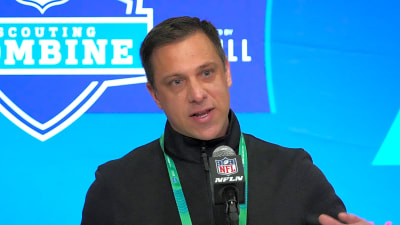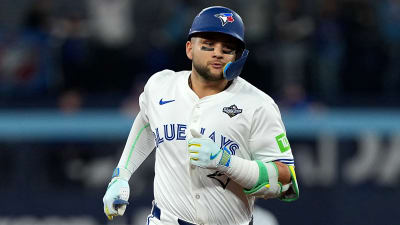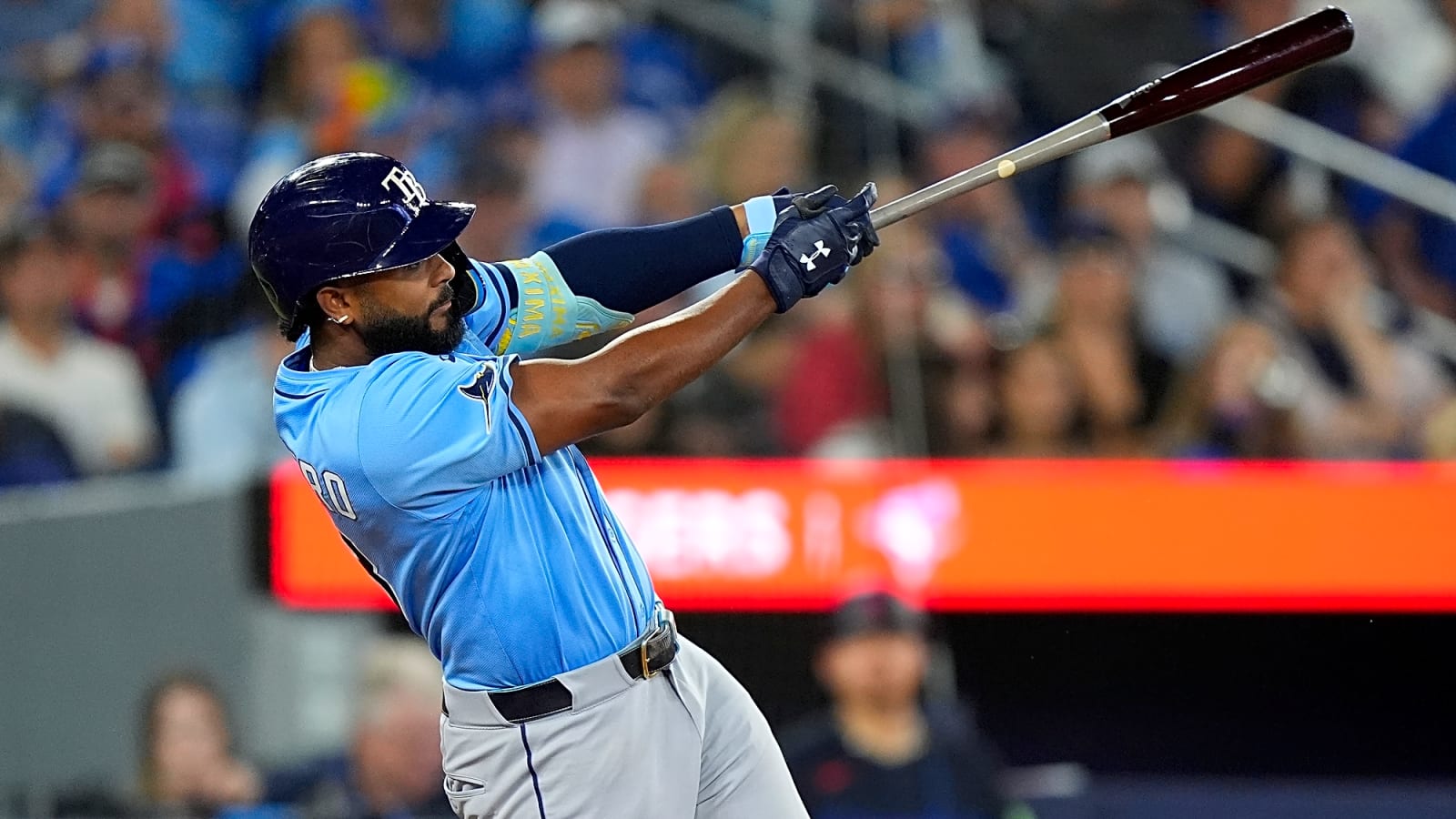
Coming into 2025, expectations were lofty for the 21-year-old Junior Caminero. With just 213 MLB plate appearances to his name before this year, the former consensus top-five prospect would get his first chance to display his Zeus-like power in a full season.
Given his youth and prior struggles to pull the ball or hit it in the air at the MLB level, projections for Caminero were conservative. The projection models ZiPS, Steamer and THE BAT X relegated the Tampa Bay Rays third baseman to a 22-25 home run season with an fWAR failing to surpass 3.5. Those are respectable numbers, but they couldn’t hold a candle to what reality had in store.
Caminero instead swatted 45 home runs in 2025, the sixth most in the majors and third most in the AL, trailing only MVP hopefuls Aaron Judge and Cal Raleigh.
This offensive breakout earned him a 129 wRC+ and 4.6 fWAR, the latter of which ranked third among those at the hot corner. His 45 dingers also set a single-season AL record for players aged 21 or younger, only trailing Hall of Fame third baseman Eddie Mathews in 1953 for the major league record.
It was a historic season for Tampa Bay’s prized infielder, who stayed true to his promise of being one of baseball’s prolific power hitters. His 78.3 mph average bat speed gave him the third fastest swing in the majors. He also ranked 16th in barrels per plate appearances with a 10.4% rate.
He did this while keeping his strikeout rate at just 19.1%, making him one of only six qualified hitters with 10+ barrels/PA and a sub-20% K%. He joined Juan Soto, Salvador Perez, Corey Seager, George Springer and Ben Rice in this elite club.
Yet, this dynamic offense wasn’t always what Caminero was bringing to the table this year. Entering play on May 23, he was staring at a deflating .662 OPS on the season.
From that point on, he hit .278 with a .920 OPS, good for ninth highest among qualified hitters. It was adjustments made at the plate mid-season that turned Caminero into a top-10 hitter over the season’s last four months.
Caminero’s Critical Stance Change
Caminero joined the Rays for his first big league cup of coffee in 2023 and logged another 43 games in 2024. At 38°, he owned the league’s 16th most open stance in his first two seasons.
However, he tried something different to start the 2025 campaign.
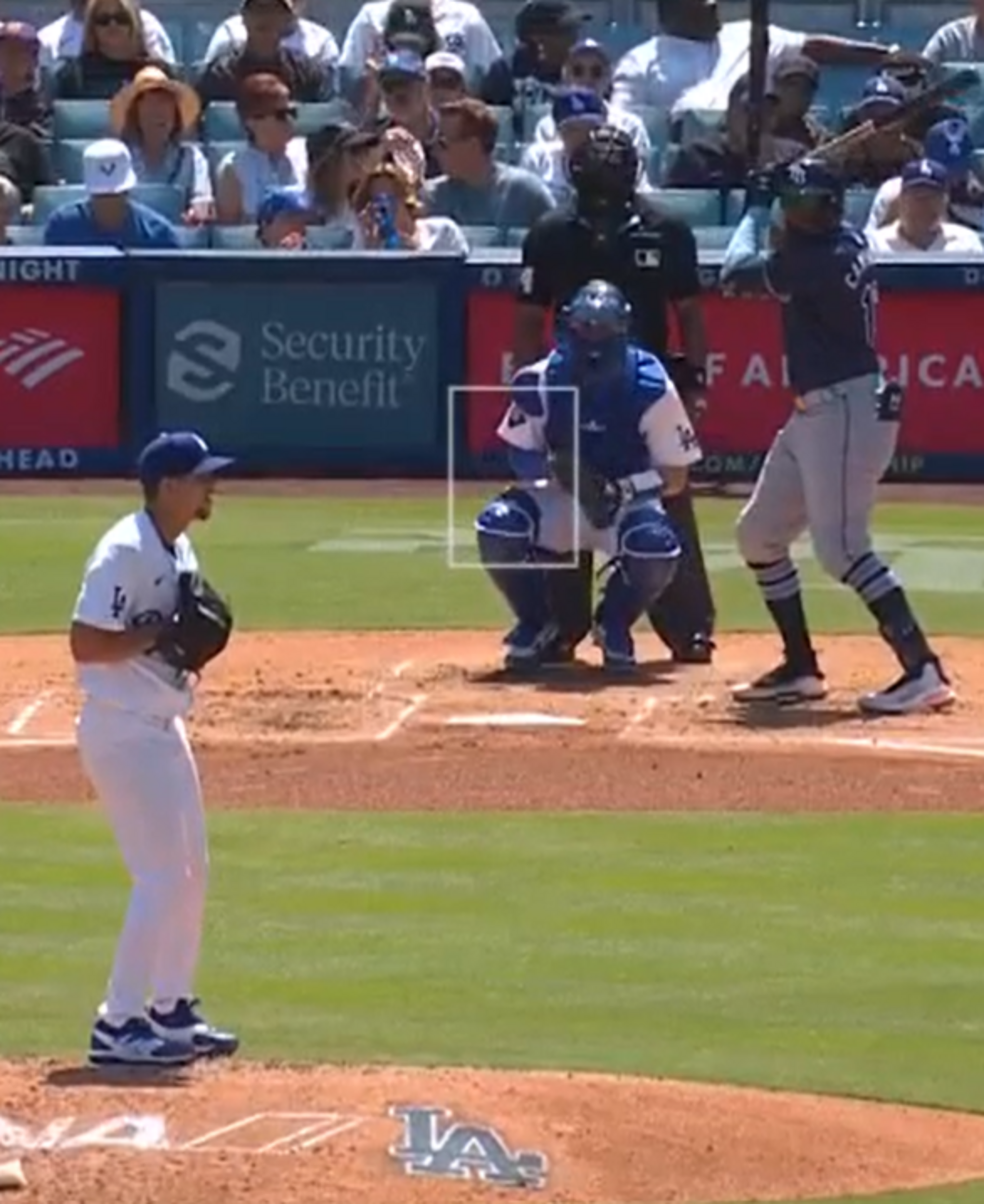
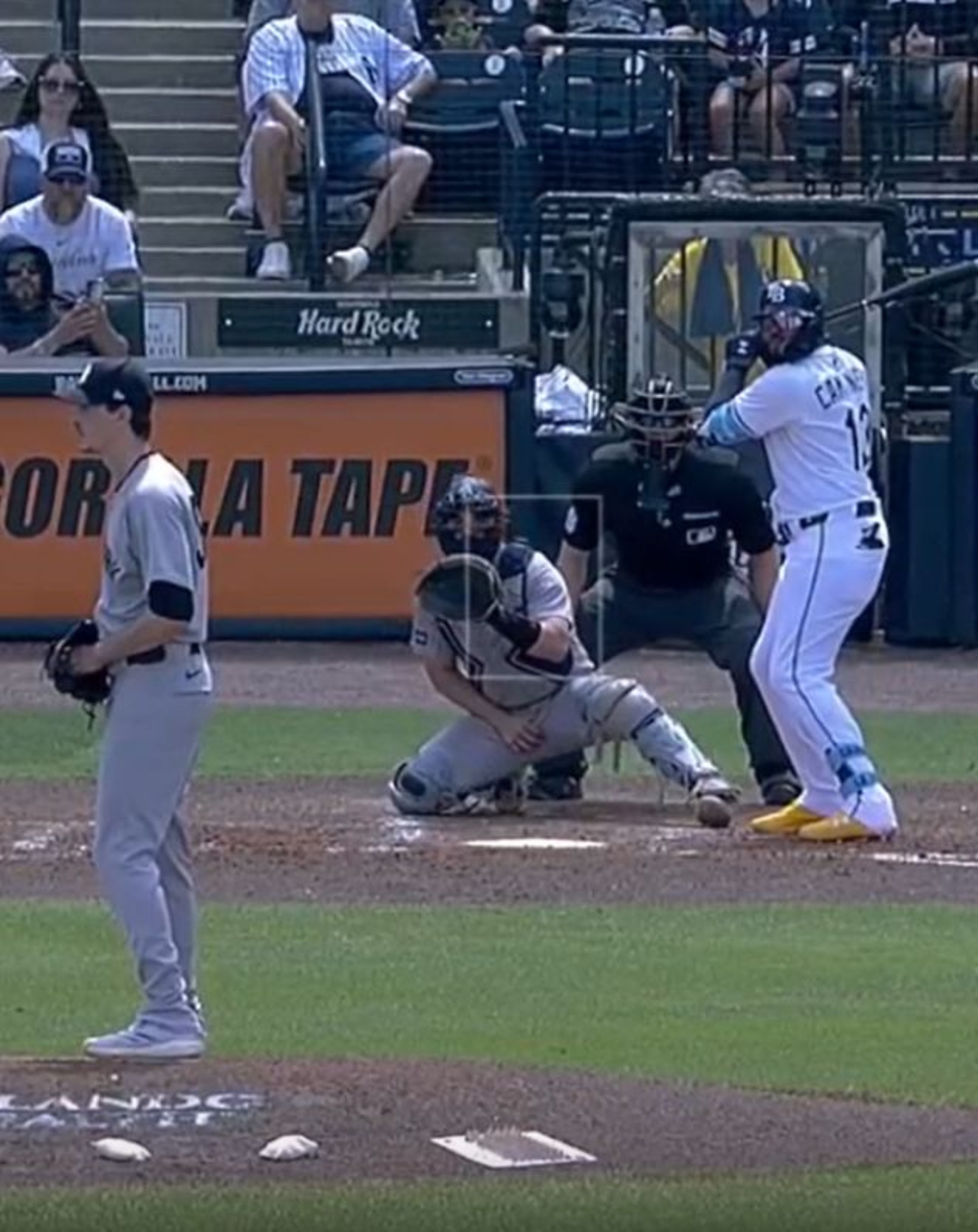
Caminero shrank his stance from 38° open in 2023-24 to 22° open in April of 2025. During the month, he continued to put more than half his batted balls on the ground while also struggling to consistently pull the ball.
As the year went on, Caminero began to open his stance back up, and results followed.
| Junior Caminero by Month , 2025 | Stance angle |
|---|---|
| March/April | 22° |
| May | 29° |
| June | 34° |
| July | 41° |
| August | 41° |
| September | 40° |
By the start of June, Caminero’s stance had gone back to its old self. It even went beyond its 2023 and 2024 form in the second half of the season. Towards the start of June is also when he began to lift off. Before May 23, his pulled air rate sat at 18.7% and his barrel rate at 8.6%. After this date, his pulled air rate rose to 22.6% and his barrel rate nearly doubled to 16.2%.
To see why these numbers skyrocketed in the middle of Caminero’s season, you have to go back under the hood.
As one can assume with the increase in pull rate, Caminero got better at getting ahead of the ball. His average attack angle went from 5° before this span to 9° in this span. It brought his ideal attack angle rate to seventh highest in MLB. Thanks to this change, he hit the ball 36.8 inches in front of his center of mass, tied for the ninth highest among the 226 qualifiers from May 23 on.
Caminero’s attack direction also changed from 3° to the pull side to 6° to the pull side. This played a big role in his 46.1% pull rate in the final 109 games of his season. That, coupled with his 7% increase in fly ball rate in this span, aided his 45-home run campaign.
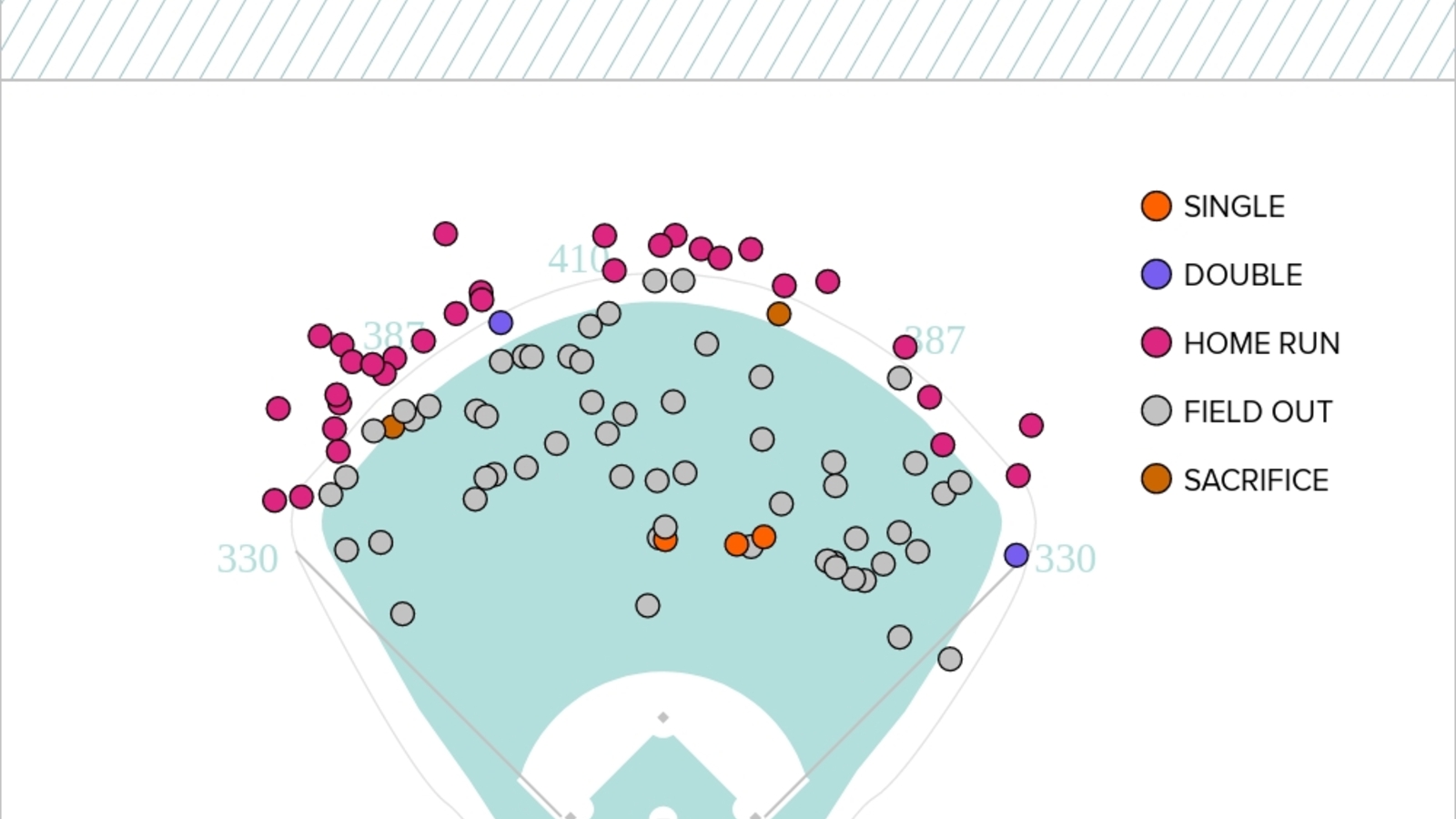
No matter how much power you have, pulling the ball always matters. Caminero’s average exit velocity went from 95.4 mph before May 23 to 97.1 mph after. His pull rate on fly balls went from 27.6% to 37.5%. The latter of those two numbers played an essential role in his near 10% increase in HR/FB% before and after this span.
Across Major League Baseball, any fly ball that is hit to the pull side is 30% more likely to be a home run than a fly ball hit straightaway or to the opposite field. Although Caminero is capable of hitting for power to all sides of the field, he too benefits from pulling the ball in the air as much as possible.
The changes he made to his stance throughout the season allowed for this increase in pulled air rate, propelling his numbers to where they ended up.
No Easy Path for Pitchers
With the widespread attention Caminero received as a prospect, the book was out on him very quickly. In 2024, he was thrown more sinkers than four-seam fastballs. This isn’t usual, but Caminero didn’t make it hard to see why.
| Caminero by Pitch Type (2024) | Pitch % | AVG | SLG | Whiff % | Run Value |
|---|---|---|---|---|---|
| sinker | 24.2% | .175 | .200 | 22.7% | -6 |
| four-Seam Fastball | 21.1% | .361 | .778 | 22.1% | 4 |
To see more sinkers than four-seamers is uncommon. For a hitter to whiff more against sinkers is near unheard-of.
Caminero had no answer for the two-seamers he was seeing, reflected both in his numbers against them and in his high ground ball rate. He did, however, crush four-seamers. His dominance against them made it inevitable that he would not only see that many sinkers, but that those sinkers would be so effective.
Yet, those sinkers weren’t nearly as effective in 2025.
| Caminero by Pitch Type (2025) | Pitch % | AVG | SLG | Whiff % | Run Value |
|---|---|---|---|---|---|
| sinker | 21.3% | .295 | .523 | 13.4% | 0 |
| 4-Seam Fastball | 21.3% | .276 | .693 | 29.1% | 15 |
This year, Caminero not only continued to be one of the best four-seam hitters in baseball, but he also caught up to sinkers, increasing his slugging percentage against them by 323 points and cutting his whiff rate by nearly 10%, demolishing the trump card opposing pitchers once had against him.
Even sliders thrown to Caminero in 2025 failed to yield positive results for pitchers. He hit .291 and slugged .570 against sliders for a Run Value of 8, tied for the eighth highest in the majors.
When Caminero made his way to the majors, pitchers came prepared. It took until age 21 for him to adjust and stomp out the plan laid against him. Meanwhile, pitchers have yet to find a four-seamer that works to slow him down, leaving opponents with nothing to do but question how to get him out.
Sinkers are no longer the viable option they once were against Caminero. This improvement played a massive role in his lightning rod of a season, denying pitchers a pathway to silence his bat.
Moving Forward
Despite the remarkable numbers Caminero posted this past season, there is still room for improvement. For one, his .311 on-base percentage was below the major league average. This is a reflection of his below-average walk rate and above-average chase rate.
Caminero swung at 32.2% of pitches out of the strike zone this year, four percentage points above the MLB average. He whiffed on 38.9% of those chases and produced an 83.3 mph average exit velocity when chasing. Converting more of those whiffs and weak hits into balls and eventually walks is an improvement Caminero can make next year.
He finished the 2025 season with a .260 BABIP, tied for the 16th lowest among 145 qualifiers. Was this bad luck? Or a sign of too many fly balls that didn’t have the distance? The answer lies in his home/road splits.
Lowest Road BABIP Since 1901 (min. 325 PA)
- 1947 Eddie Lake (.181)
- 1969 Ken Harrelson (.186)
- 2017 Rougned Odor (.186)
- 2015 Albert Pujols (.193)
- 1969 Brooks Robinson (.193)
- 1961 Roger Maris (.195)
- 2025 Junior Caminero (.197)
To put it simply, Caminero was a different player at home and on the road. He posted a .954 OPS at George M. Steinbrenner Field and a .743 everywhere else. The Rays, of course, played the year at a spring training stadium with shorter-than-average dimensions.
So, was Caminero’s success a testament to the offensive environment of the Rays’ new home? Or was it something else? The truth is, it was the most uncontrollable aspect imaginable.
| Caminero Line Drives (2025) | AVG | xBA | Diff. | SLG | xSLG | Diff. |
|---|---|---|---|---|---|---|
| home | .714 | .677 | .037 | 1.122 | 1.008 | .114 |
| road | .550 | .693 | -.143 | 1.050 | 1.141 | -.091 |
The big difference in Caminero’s home/road production wasn’t in strikeouts. It wasn’t in fly balls. It came in the form of caught line drives. By expected batting average, Caminero was the seventh unluckiest hitter among the 272 with at least 25 line drives hit on the road.
When it came to hard-hit fly balls, Caminero hit .600 despite a .753 expected batting average. By this metric, he was the fourth unluckiest hitter among the 125 with at least 25 hard-hit line drives hit on the road.
There’s no equation that explains this. It’s bad luck. It’s baseball. Thankfully, there’s no indication that it will continue into next season.
Caminero averaged a 100.7 mph exit velocity on his road line drives, the third highest on the aforementioned list of 272. Yet, his results did not reflect those efforts. If he continues to crush his line drives the way he did this year, the results *should* come.
Caminero left the door open to improve on an already historic first full big league season. Some of these improvements can be controlled, and some require hope from even Caminero himself. But through stance changes and better pitch-specific metrics, the Rays third baseman gave Tampa Bay a season to remember in a year defined by unforgettable circumstances.
More must-reads:
- Veteran closer Kenley Jansen fills hole in back end of Tigers bullpen
- San Francisco Giants reward Adrian Houser in journey from the scrap heap
- The 'AL and NL MVPs since 2000' quiz
Breaking News
Trending News
Customize Your Newsletter
 +
+
Get the latest news and rumors, customized to your favorite sports and teams. Emailed daily. Always free!
